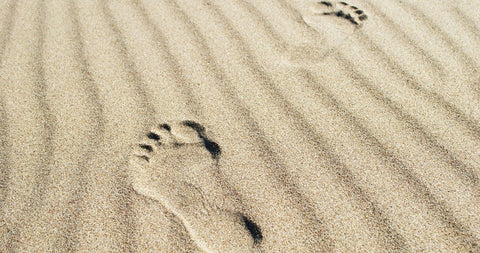
Fed Up Of Fungal Nails? Follow Our Guide On How To Treat Fungal Nail Infection
Our guide to fighting fungal nails
Fungal nail infection is a common issue, and more likely to occur as we get older or following a nail injury.1 A fungal nail infection can be uncomfortable, painful and also frustrating. It leaves the nail looking unattractive, which can make you self-conscious about the appearance of your feet. 1
What is a fungal nail infection?
Fungal nail infections are a common problem that can affect any nail. The reason toenails are most commonly affected is that feet generally provide the environment needed for the fungi to breed and grow. 1
Infection occurs due to the overgrowth of fungi under, or on the surface of the nail.1,2 Spores of a fungus make their way between your toenail and the skin underneath the nail bed and feed off the skin or the keratin in the nail. Although not usually serious, the condition can be unpleasant as nails become discoloured, thickened and distorted. 1,2

To give it its medical name, Distal Subungual Onychomycosis (DSO) is the most common type of fungal nail infection. DSO infects the skin under the end of the nail bed and in the nail.2 The nail often turns yellow or brown and may end up becoming weak, crumbling and splitting or separating from the skin.2
Another type of fungal nail infection is White Superficial Onychomycosis (WSO). WSO can be seen in the top layer of the nail, initially forming white spots on the surface.1 After some time, the surface of the nail may become covered with a crumbly, chalky powder. However, the nail will not thicken and separate from the skin. 1,2
What does fungal nail look like?
Healthy nails are smooth, pinkish and have a thin white stripe on the tip. Here are some obvious signs of fungal nail infection that you should look out for: 1,2
- Nails start to look dull and lose their natural shine.
- There is discolouration around the edge of the nail.
- White or yellowish spots appear in the middle of the nail.
- The nail thickens or becomes brittle.
- The nail crumbles and splits, or even separates from the skin.
- Discomfort while wearing shoes, walking, or standing for time.

It’s important to act quickly if you notice any of these symptoms. If you don’t treat the infection, there’s a chance it will worsen and spread to other nails. 1,2
Try Scholl Fungal Nail Treatment as an effective solution for mild fungal nail infections. It produces visible results within weeks and helps prevent spread of infection and recurrence.1,2
Treating Fungal Nail with Scholl
Mild fungal nail infection can be treated with Scholl Fungal Nail Treatment. The product comes with hygienic disposable single use files that are used to remove the top layer of the nail. This helps ensure that the advanced formula penetrates the nail and targets the fungi on the infected nail bed, stopping it from spreading.
Fungal nail treatment can take a number of months to work. This is because toenail needs time to grow back, and toenails grow only 1-2mm per month. You’ll only see a visible improvement in the infection when the damaged nail has completely grown out.

Ensure you start treating the infection as early as possible, ideally as soon as you see the signs. With Scholl’s Fungal nail treatment, effective treatment can mean a visible improvement in weeks.
The easy to use treatment works in two phases
Phase 1: The treatment phase takes 4 weeks. You start with filing the nail surface once a week, disposing the used file to avoid contamination and applying the advance formula. Repeat the same steps in weeks 2,3 and 4.
Phase 2: This is the protection phase. You continue applying the liquid once a week for up to 9 months or when the discolouration has completely grown out.
 |
Washing and drying your feet carefully. Always wash your hands after touching an infected nail. |
 |
Ensure you are treating any other fungal infections you may have, for example athlete’s foot. |
 |
Wear shoes that fit properly with enough room for the toes. |
 |
Keep your nails trimmed. Sterilise the tools used for pedicures by cleaning them thoroughly under hot water or using alcoholic wipes or liquid.
|
How can you prevent fungal nail infection?
Unfortunately it is impossible to eliminate the risk of developing fungal nail infection. However, there are simple things you can do to reduce the risk of getting infected. 1,2
|
|
Wearing well-fitting shoes will allow your feet to ‘breathe’ and reduce the possibility of warm, moist environments where the fungi can breed. Throw away old shoes and change socks regularly. |
 |
Avoid walking around barefoot in public pools, showers and locker rooms. Wear protective footwear like flip flops instead. |
 |
Regularly check your nails and ensure they are trimmed carefully and regularly. Always make sure your nail clipper is disinfected |
 |
Avoid sharing towels and socks with other people and wash your towels regularly. If you have athlete’s foot, treat it as soon as possible to avoid the infection spreading to your nails. |
 |
Disinfect your shoes regularly with an anti-fungal shoe spray or powder. |
Rb-M-03236. Always read the instructions.

